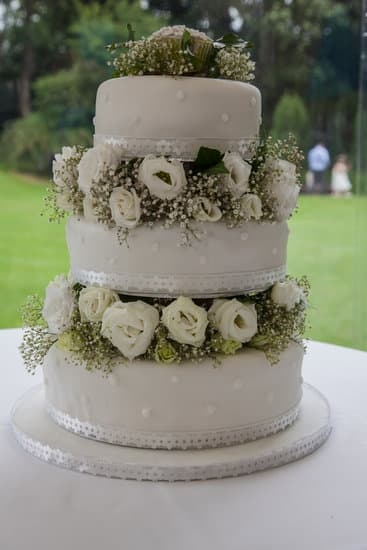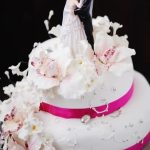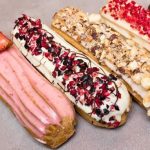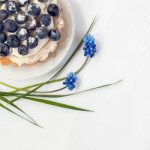When it comes to creating visually stunning cakes, bakers rely on a variety of techniques and tools to transform their baked creations into works of art. One of the key questions that often arises is: what do bakers use to decorate cakes? From fondant to buttercream, edible decorations to intricate piping techniques, the world of cake decoration offers endless possibilities for creativity and expression.
The art of cake decoration goes beyond mere frosting and sprinkles; it involves a mastery of different ingredients, tools, and techniques to bring a cake design to life. Bakers utilize a range of essential decorating tools, from piping bags and tips to fondant molds and edible paints, to achieve professional-looking results that wow customers and guests alike. Understanding how to effectively use these tools is crucial in creating beautiful and eye-catching designs on cakes.
In this comprehensive guide, we will delve into the world of cake decoration, exploring everything from the versatile uses of fondant to the classic choice of buttercream for personalized touches. Whether you are a baking enthusiast looking to enhance your skills or a professional baker seeking inspiration for your next creation, understanding the various elements that go into decorating cakes is essential for achieving stunning results.
So let us embark on a journey through the artistry of cake decoration and unlock the secrets behind creating show-stopping confections with flair and finesse.
Tools of the Trade
When it comes to decorating cakes, bakers rely on a variety of tools to bring their creative visions to life. From simple designs to intricate details, having the right equipment is essential for achieving professional-looking results. Some of the essential tools that bakers use to decorate cakes include piping bags and tips, offset spatulas, cake combs, stencils, and fondant smoothers.
Piping bags and tips are indispensable tools for creating stunning designs on cakes. Bakers can use different tips to achieve various effects, such as ruffles, shells, flowers, and more. Offset spatulas are perfect for spreading frosting smoothly and evenly across the surface of a cake. Cake combs are used to create textured designs on the sides of cakes, adding visual interest and depth.
In addition to these basic tools, bakers often use stencils to add intricate patterns and designs to their cakes. Stencils can be used with buttercream or royal icing to create beautiful decorations with precision. Fondant smoothers are essential for working with fondant, a versatile ingredient that allows bakers to sculpt three-dimensional decorations and cover cakes with a smooth finish. Overall, having a well-stocked arsenal of decorating tools is key to bringing creativity and artistry to cake decoration.
| Decorating Tool | Use |
|---|---|
| Piping Bags and Tips | Create various designs like flowers, ruffles, etc. |
| Offset Spatulas | Spread frosting smoothly on cakes. |
| Cake Combs | Create textured designs on cake sides. |
Fondant
One of the key advantages of using fondant is its ability to hold intricate designs without losing shape or breaking apart. This makes it ideal for creating elaborate decorations that require precision and attention to detail. In addition, fondant can be easily colored with food coloring to achieve the desired hue for your design. Whether you’re looking to create a whimsical birthday cake or an elegant wedding cake, fondant provides the flexibility needed to bring your vision to life.
When working with fondant, bakers often use special tools such as rolling pins, cutters, and shaping tools to manipulate the dough into different shapes and textures. From covering cakes smoothly with a fondant smoother to adding textures with impression mats, these tools are essential in achieving professional-looking results.
Bakers also use cornstarch or powdered sugar for dusting surfaces when rolling out fondant to prevent sticking. With the right tools and techniques at their disposal, bakers can unleash their creativity and transform ordinary cakes into extraordinary creations using fondant.
Buttercream
One of the key tools that bakers use when working with buttercream is a piping bag and various piping tips. Piping bags come in different sizes and materials, such as plastic or reusable cloth, while piping tips can create different shapes and patterns on the cake.
Some popular tips include round tips for creating dots or writing, star tips for making swirls or rosettes, and petal tips for intricate flower designs. By mastering different piping techniques, bakers can elevate their cake decorations and showcase their creativity.
When working with buttercream, it’s important for bakers to consider factors such as temperature and consistency. Buttercream can become too soft or too stiff depending on the room temperature or how long it has been left out. To achieve the perfect consistency for decorating, bakers should practice proper mixing techniques and adjust the amount of sugar or liquid as needed.
Additionally, chilling the cake before decorating can help the buttercream set faster and hold its shape better. With patience and practice, bakers can master the art of using buttercream to decorate cakes with a personal touch.
Piping Techniques
Basic Piping Tips and Tricks
When it comes to cake decorating, piping techniques play a crucial role in achieving beautiful and intricate designs. Bakers use piping bags fitted with various tips to create different effects on cakes. For beginners, it’s essential to start with the basics, such as practicing steady hand movements and consistent pressure on the piping bag. Simple swirls, rosettes, and stars can be easily achieved with a round or star-shaped piping tip.
Advanced Piping Designs
As bakers gain more experience and confidence in their piping skills, they can move on to creating more intricate designs on cakes. Advanced piping techniques involve using different tips to make lace-like patterns, intricate flowers, and detailed borders. Bakers can also experiment with combining multiple colors of buttercream or royal icing to add dimension and interest to their designs. With practice and patience, bakers can master the art of piping elaborate decorations that will wow their customers or guests.
Choosing the Right Piping Tip for the Job
One key aspect of mastering piping techniques is choosing the right type of piping tip for the desired design. Open star tips are great for creating textured borders and rosettes, while closed star tips are perfect for making defined swirls and stars.
Leaf tips can be used to create realistic foliage accents, while petal tips are ideal for crafting delicate flower petals. By experimenting with different tips and practicing various techniques, bakers can elevate their cake decorating skills and create stunning edible works of art.
Edible Decorations
One popular choice among bakers for decorating cakes is using fondant shapes and figures. Fondant is a versatile sugar paste that can be rolled out and shaped into various designs, from simple geometric patterns to intricate 3D decorations.
Bakers often use cookie cutters, molds, and sculpting tools to create fondant decorations that match the theme or occasion of the cake. Whether it’s delicate flowers for a wedding cake or playful characters for a birthday cake, fondant allows bakers to unleash their creativity and bring their vision to life.
In addition to fondant, bakers also utilize other edible embellishments such as chocolate shavings, fresh fruits, and edible glitter to add color and texture to their cakes. Chocolate shavings can be used to create elegant borders or graphic designs on ganache-covered cakes, while fresh fruits like berries, citrus slices, or edible flowers can provide a pop of color and freshness.
Edible glitter and shimmer dust are perfect for adding sparkle and glamour to special occasion cakes like weddings or anniversaries. The possibilities are endless when it comes to using edible decorations to enhance the beauty and taste of your baked creations.
Creative Inspiration
Creativity is a key component when it comes to decorating cakes, as it allows bakers to showcase their unique style and expertise. Finding inspiration can come from various sources, whether it be nature, art, fashion, or even everyday objects.
One way to spark creativity is by browsing through magazines, websites, or social media platforms dedicated to cake decorating. These platforms often feature the latest trends, innovative techniques, and stunning designs that can serve as a starting point for your own creations.
Color Palette
Choosing the right color palette is essential in creating visually appealing cake decorations. Take cues from nature’s vibrant hues or experiment with contrasting colors to make your designs pop. Utilizing color theory principles can also help you understand how different colors work together harmoniously or create a striking contrast.
Theme-Based Decorations
Incorporating a theme into your cake decoration can take your creations to the next level. Whether it’s a birthday celebration, wedding ceremony, or holiday event, aligning your decorations with the overall theme can create a cohesive and visually pleasing design. Look for inspiration in seasonal elements, cultural traditions, or personal interests to infuse your cakes with creativity and meaning.
Personal Touch
Finally, developing your own decorating style involves adding a personal touch to your creations. Experiment with different techniques, mix and match various tools and ingredients, and don’t be afraid to think outside the box. Your unique perspective and artistic flair are what will set your cakes apart from the rest. Remember that practice makes perfect – so keep exploring new ideas and honing your skills to develop a distinct decorating style that reflects who you are as a baker.
Tips and Tricks
When it comes to achieving professional-looking cake decorations, bakers rely on a combination of skill, practice, and the right tools. One essential tool that bakers use to decorate cakes is a piping bag. Piping bags come in various sizes and are filled with buttercream, royal icing, or other decorative frosting to create intricate designs on cakes. Coupled with different piping tips, bakers can achieve anything from delicate floral patterns to bold lettering with precision.
Another key tool for cake decoration is a turntable or rotating cake stand. This allows bakers to easily spin the cake while decorating, ensuring even coverage and smooth lines. A sharp offset spatula is also crucial for spreading frosting smoothly and leveling the surface of the cake for a clean canvas to work on. Additionally, a bench scraper comes in handy for achieving sharp edges on buttercream cakes.
To add dimension and visual interest to their creations, bakers often use edible decorations such as fondant shapes, gum paste flowers, edible glitter, or sprinkles. These embellishments can be used to enhance the overall design of the cake or add a pop of color and texture. By incorporating these decorative elements strategically, bakers can elevate their cakes from simple desserts to works of art that are sure to impress any crowd.
Conclusion
In conclusion, the art of cake decoration is a delightful and creative journey that allows bakers to express themselves and delight others with beautiful and delicious creations. From the tools of the trade to fondant, buttercream, piping techniques, edible decorations, creative inspiration, tips and tricks – there are endless possibilities for creating stunning designs that showcase your skills as a baker.
One key ingredient that bakers use to decorate cakes is fondant. This versatile material allows for intricate designs and smooth finishes that elevate the appearance of any cake. Buttercream, on the other hand, offers a classic and personal touch that can be molded into various shapes and styles, perfect for adding a personalized flair to your creations.
As you embark on your cake decorating journey, remember to not only follow existing techniques but also to experiment with different methods and tools. By exploring new ideas, finding inspiration in unexpected places, and honing your skills through practice and patience, you will undoubtedly develop your own unique decorating style. So go ahead, unleash your creativity and let your imagination run wild as you explore the wonderful world of cake decoration.
Frequently Asked Questions
What Do Professionals Use to Decorate Cakes?
Professionals use a variety of tools and techniques to decorate cakes, including piping bags with different tips, fondant, edible paints, and airbrushing tools. These items help them create intricate designs and decorations on cakes.
What Do People Decorate Cakes With?
People decorate cakes with a wide range of ingredients and decorations, such as buttercream frosting, fondant, sprinkles, edible glitter, fresh fruits, chocolate shavings, and handmade sugar flowers. These elements not only enhance the visual appeal of the cake but also add flavor and texture.
What Is Used for Decorating Cakes Easily?
One popular tool used for decorating cakes easily is a turntable or revolving cake stand. This handy device allows decorators to easily spin the cake as they work on it, ensuring even coverage of frosting and smooth application of decorations. Additionally, pre-made icing tubes with various tips can simplify the process for beginners looking to decorate cakes effortlessly.

Welcome to our cake decorating blog! My name is Destiny Flores, and I am the proud owner of a cake decorating business named Cake Karma. Our mission is to provide delicious, beautiful cakes for all occasions. We specialize in creating custom cakes that are tailored specifically to each customer’s individual needs and tastes.





